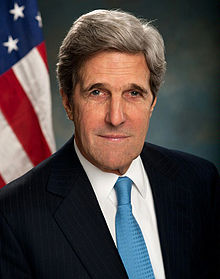With Netanyahu, the perfect is the enemy of the good
David Ignatius/The Daily Star/Feb. 26, 2015
Prussian King Frederick the Great offered this rebuke to those who refused to allow any concessions: “If you try to hold everything, you hold nothing.” President Barack Obama might make a similar retort to Israeli Prime Minister Benjamin Netanyahu’s attack on the alleged “bad deal” the United States is contemplating with Iran. Netanyahu rejects any concessions that allow Iran to enrich uranium; he thinks the U.S. goal of a one-year “breakout” period before Iran could build a bomb isn’t enough.
To which several leading administration officials respond: Okay, then, what’s a better practical idea for controlling Iran’s nuclear program? They see in Netanyahu’s maximalist goals an air of unreality – of fantasy, even. They grant that their solution isn’t perfect. But they argue that it’s far better for Israel and the West than any other plausible scenario.
The Iran nuclear talks, arguably the most important diplomatic negotiations of the last several decades, will come to a head next month. Netanyahu will take his case against the agreement to Congress on March 3 in an unusual speech organized by the Republican House speaker. His own political leadership will be tested in Israeli elections on March 17. The Iran negotiations will reach a March 24 deadline for the framework of a final comprehensive accord.
Israel’s Intelligence Minister Yuval Steinitz made the case against the Iran agreement in an interview with me last week. “From the very beginning, we made it clear we had reservations about the goal of the negotiations,” he explained. He said Obama’s effort to limit the Iranian nuclear program for a decade or so, in the expectation that a future generation of leaders wouldn’t seek a bomb, was “too speculative.”
The administration’s response is that the agreement is better than any realistic alternative. Officials argue it would put the Iranian program in a box, with constraints on all the pathways to making a bomb. Perhaps more important, it would provide strict monitoring and allow intrusive inspection of Iranian facilities – not just its centrifuges but its uranium mines, mills and manufacturing facilities. If Iran seeks a covert path to building a bomb, the deal offers the best hope of detecting it.
If the current talks collapse, all these safeguards would disappear. The Iranians could resume enrichment and other currently prohibited activities. In such a situation, the U.S. and Israel would face a stark choice over whether to attack Iranian facilities – with no guarantee that such an attack would set Tehran back more than a few years. The deal taking shape would likely allow Iran about 6,000 IR-1 centrifuges at Natanz. The Iranians apparently wouldn’t install IR-2s, which operate twice as fast, and they would limit research on future models, up to IR-8s, that are on the drawing board. How these research limits would be monitored and enforced is a key bargaining issue. Another critical variable is the size of the stockpile Iran could maintain; U.S. officials want a very low number, with additional enriched material shipped out of Iran.
One official argues that the U.S. would be better off with 9,000 IR-1s and a small stockpile than with 1,000 IR-2s and a large stockpile. Netanyahu probably won’t address this issue in his speech to Congress, since he insists the only acceptable number of centrifuges is zero. Another key technical issue is how nonpermitted centrifuges would be dismantled. There is a range of options, from simply unplugging the equipment to pulverizing it altogether. The U.S. wants a formula that would require at least a year for the Iranians to restart the shelved equipment. As for the planned Iranian plutonium reactor at Arak, negotiators seem to have agreed on a compromise that will halt construction well before Arak becomes “hot” with potential bomb fuel.
The length of the agreement is a crucial variable. U.S. officials have always spoken of a “double-digit” duration period, somewhere between 10 and 15 years. Negotiators are also exploring the possibility of different phases of the timeline, with inspection provisions having a longer lifespan than, say, limits on the number of centrifuges. The deal-stopper for the administration is if Iran balks at U.S. insistence that sanctions will only be removed step by step, as Iran demonstrates that it’s serious about abiding by the agreement. In the U.S. view, Iran has to earn its way back to global acceptance. The Iran deal is imperfect. As Count Metternich observed in 1807 about negotiations with the rising powers of his day, “Peace does not exist with a revolutionary system.” But U.S. officials make a compelling case that this agreement is a start toward a safer Middle East.
**David Ignatius is published twice weekly by THE DAILY STAR.






















